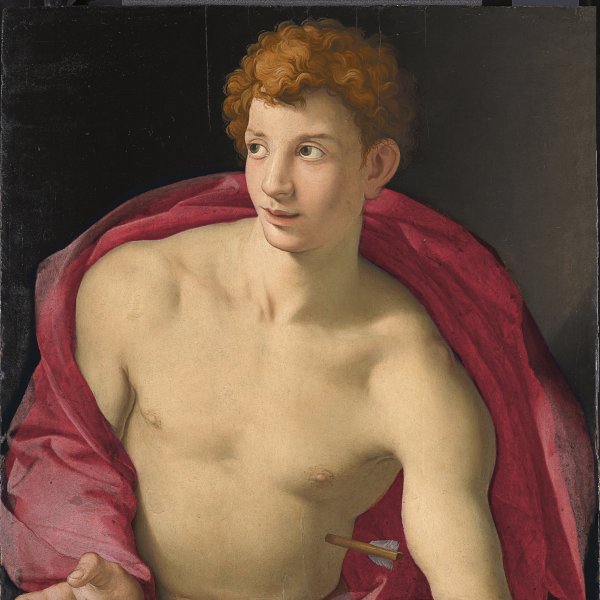Bronzino (Agnolo di Cosimo di Mariano)
Agnolo di Cosimo di Mariano was born in 1503 in Monticelli, a small town near Florence. From the outset of his career he was known as Bronzino, a nickname whose origins are unknown. He first trained as a painter with Raffaellino del Garbo and then with Pontormo, who became not only his teacher and most important artistic reference but also a close friend for life. During the early years of his career Bronzino collaborated with Pontormo on easel paintings and decorative fresco cycles such as the one for the church of Santa Felicità in Florence. In 1539 Bronzino was involved in the decorations to celebrate the marriage of Duke Cosimo I de’Medici and Eleonora of Toledo, and at that point was appointed court painter to the Duke. Bronzino produced religious and mythological paintings but was particularly outstanding as a portraitist. Rather than depicting every detail of the sitter’s appearance, Bronzino focused on aspects such as social position, the elegance of the pose and the restraint and bearing of his models. In his portraits, elements such as the rich, brightly coloured materials, jewels, gleaming armour and complex hairstyles all acquire great importance through their decorative merit and ability to suggest power and wealth. Among the finest portraits by the artist are Cosimo de’Medici in Armour, and Eleanora of Toledo and her Children (both Galleria degli Uffizi, Florence), and Ludovico Capponi (Frick Collection, New York).
Bronzino was a poet as well as a painter. He achieved fame and renown in his own lifetime in addition to the respect of his contemporaries and was one of the most influential figures in the Accademia del Disegno, which he cofounded in 1563, as well as in the city’s intellectual circles. His most important followers include Alessandro Allori, whom Bronzino both taught and supported.





